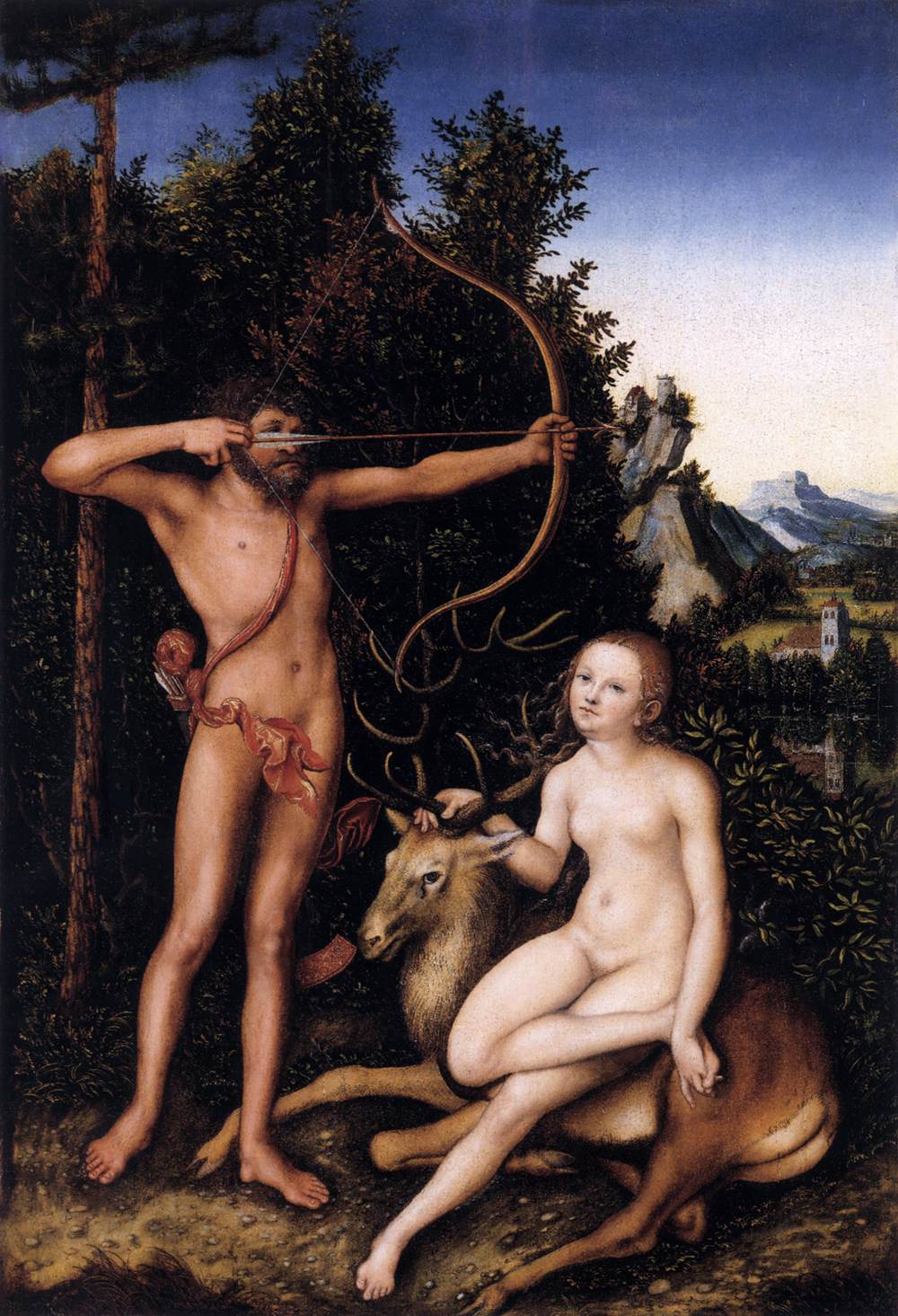Description
The painting Apollo and Diana by German artist Lucas Cranach the Elder is a Renaissance masterpiece. The work is in the collection of the Museo del Prado in Madrid and measures 85 x 57 cm. This work has been the object of study for its artistic style, composition, color, the history of painting and little-known aspects.
Cranach's artistic style is characteristic of the German school of the Renaissance. Her figures are slender and graceful, with great attention to detail in clothing and accessories. In Apollo and Diana, the gods are depicted with idealized beauty, their bodies perfectly proportioned.
The composition of the painting is interesting due to the position of the gods. Apollo is standing in the center of the painting, while Diana is kneeling at his feet. The composition is symmetrical, with the figures placed on a vertical axis. This symmetry reflects the importance of harmony and balance in ancient Greek culture, from which Cranach drew inspiration.
Color is also an important aspect of the work. The colors are vibrant and saturated, reflecting the wealth and power of the gods. The use of color also helps to define the figures and highlight their characteristics.
The history of the painting is interesting because it was commissioned by the Elector of Saxony, Frederick the Wise, for his castle in Wittenberg. The work is believed to have been painted around 1530, during the period when Cranach worked for the Saxon court. The work is an example of artistic patronage by the nobility in the Renaissance.
A little-known aspect of the painting is that it is believed to depict a scene from Greek mythology in which Apollo and Diana meet in an archery competition. However, the work can also be interpreted as a representation of the harmony and union between the gods.
In short, Lucas Cranach the Elder's Apollo and Diana is a German Renaissance masterpiece notable for its artistic style, composition, color, and history of painting. This work continues to be the object of study and admiration for its beauty and meaning.


